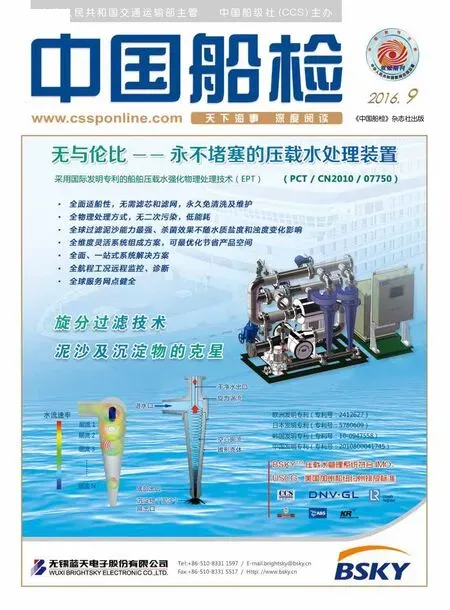Safety Concerns for River-Sea Direct Transportation
Reporter Liu Xiao
River-sea direct transportation shortens the distance between China’s inland and the world. In the interview an insider told reporter, although river-sea direct transportation has the characteristics of transiting cargoes without going through other ports, which can greatly improve transport eff i ciency, and reduce transport cost, it is at the same time limited by Yangtze River Bridge’s headroom, Yangtze River’s depth, ship type and other factors. Why did this situation occur? The insider explained, at present, riversea direct transportation has three concepts: one refers to the channel downstream of Nanjing. Because the channel has enough depth, the sea-going ships which can navigate through Yangtze River estuary can go through the river, so as to achieve river-sea direct transportation.
Secondly it is the channel downstream of Wuhan. The last is the channel downstream of Chongqing. The insider pointed out: “the three concepts are largely caused by the differences of channel. Most inland water of our country is natural shallow water channel, but the navigation of river-sea direct vessel needs enough depth as a guarantee. This difference also leads to the fact that the river-sea direct vessel will be different with general seagoing ships in terms of the tonnage or ship type in the future. Considering the situation of river-sea direct safety operation, although sea-going ships have the largest base on entering to the river, there is also some potential safety hazards.”
In order to make the hazards more clear, the expert explained from the different rules of Rules for Sea-Going Ships and Rules for Inland Waterway Ships in taking action to avoid collision activities. According to the introduction, at sea, in order to avoid collision to do any changes of sailing direction or speed, if the conditions permit, the change should be so obvious that other ships can easily feel by vision or radar detection,at the same time it should avoid doing a series of small changes for sailing direction or speed. If the water is enough, then only changing the direction would be the most effective action to avoid urgent situation, as long as this action is timely, substantial and will not lead to another urgent situation. While the inland water is limited by water and channel width, taking the action of great direction to give way to other ships is not realistic;therefore, the avoidance principle of Rules for Inland Waterway Ships is: ships should keep high alert on sailing, when the unknown activity of opposite ships is doubted or the sound signal is not unif i ed, it should slow down immediately, stop, back if necessary, to prevent the collision. Any actions for preventing collision should be clear, effective, timely, and using good driving technology until all the opposite ships past.
The expert believed that river-sea direct transportation is a process of “convergence”, so rules convergence is also very important. Different understanding and use of the rules will cause different results, so only by reducing the “differences”, accurately understanding and using the rules can safe navigation be reliably guaranteed. He suggested that: “the sea-going ships sailing in the inland waterway should give way by car as priority, give way by rudder as subsidiary, so as to leave enough time to estimate the situation. At the same time, how to make the rules more ‘mature’ should be the next step important work for river-sea direct transportation.”

